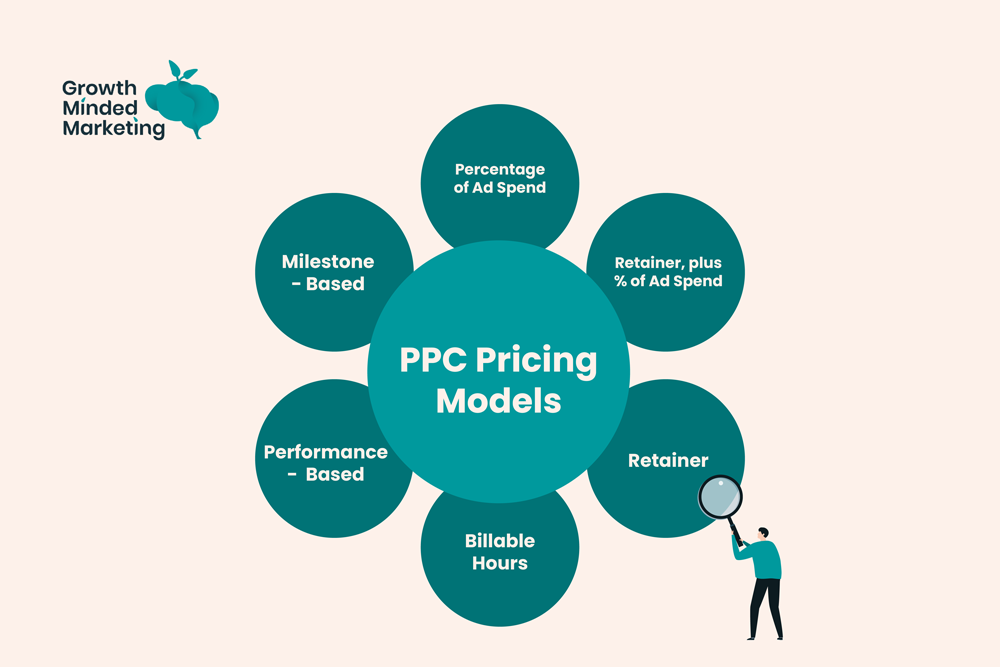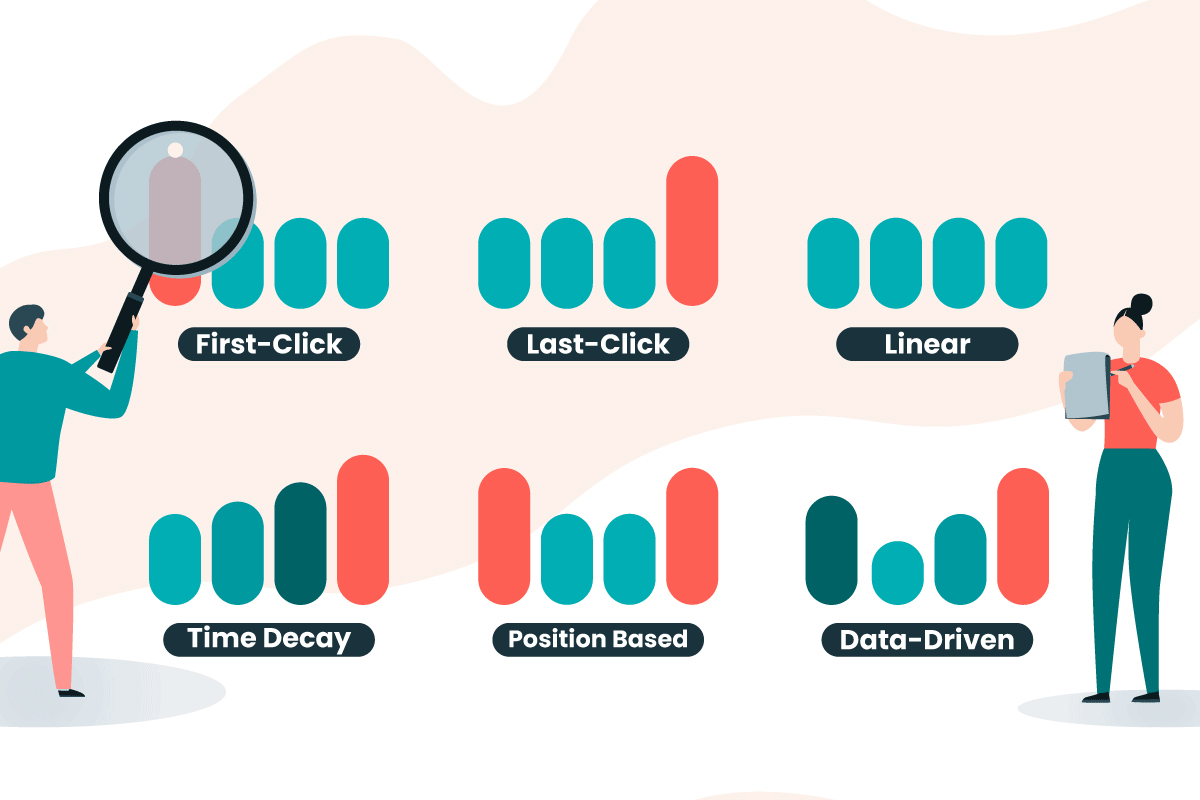One of the biggest concerns for businesses looking to find and hire an agency – (or boutique Google Ads agency 😏) – to manage their performance marketing campaigns, is finding the right PPC management pricing model that works for them.
If you’re shopping around for an agency partner, you’ll quickly realise that there are numerous PPC agency pricing models. As a client, you want to know what’s available in the market to determine what fits your needs and budget.
So this article looks at the most popular PPC management pricing models, their pros and cons, and when they are best suited.
But before you do that…
Table of Contents
ToggleDetermine Your Businesses Goals and Needs
One mistake you can make when hiring a PPC agency is settling for pricing model without forethought of your businesses goals and needs.
Ultimately your business goals help determine the right PPC agency pricing structure for your business.
Perhaps you’ve been managing your PPC campaigns on your own or have an in-house PPC manager – but now want to work with a dedicated PPC agency to take the account to the next level.
Maybe you’ve been managing your own Google Ads campaigns, seen some success, and it’s time to scale.
…Or you might be starting out with paid search from scratch and need the right experienced team to take on everything PPC for you…
Whatever your goal is, PPC management costs vary – and different agencies will have different fee structures.
Start with your goals to find a mutually-beneficial pricing strategy for your business and the agency.
PPC Agency Pricing Models
We’ve listed below 6 example management pricing models that agencies might use.
List of models
- Percentage of Ad Spend
- Base retainer, plus a percentage of ad spend
- Retainer (flat-rate)
- Billable hours
- Performance-based
- Mile-stone based
1. Percentage of Ad Spend
When it comes to PPC management pricing, charging a percentage of the ad spend is probably one of the most common pricing models paid search agencies use.
Here, their PPC management fee will depend on the ad spend in the account.
Most PPC agencies will have different percentage ranges, or use the standard fees in the market.
In our experience the standard percentage ranges from 10% to over 30%.
Let’s say your ad spend for the month is $5,000 with a 20% percentage of ad spend model – the agency will charge you $1,000 p/m.
Some other agencies have pricing tiers where if you spend a range, like from $0 to $9,999, the agency fee is a flat $1,500.
Pros
This pricing model is simple as it eliminates any need for renegotiations and ambiguities in pricing. You know exactly how much you’ll spend based on your monthly budget, so determine your monthly fees. It’s reliable, and based on growth in the account.
You’re in more control of how much fee you incur. With the pricing tiers, you’ll choose a range of how much you spend to determine the agency fee.
The model is growth-oriented in that the fee amount increases with the growth in your ad spend.
Cons
Although straightforward, the percentage of ad spend model has its downsides.
The pricing model is not fit for businesses just starting with small budgets. Most agencies using this PPC management pricing model will often have minimum ad spend. If your monthly ad spend is smaller than the set minimum, this model might not be eligible to work with some bigger (aka bloated) PPC agencies.
That aside, other situations can make using this pricing model challenging.
For instance, the only way the ad agency can increase their earnings on your account is by getting you to increase the ad spend. The more you can spend, the more they can earn.
As a result, they may end up focusing more on exhausting your daily and monthly budgets with no or less concern for your KPIs, and you run the risk of wasting budgets with no limited results to show.
Plus, with a focus on ad spend, PPC agencies could devote less time improving the spend efficiency of your campaigns. Campaign optimisation is critical to lowering your CPCs, cost per conversion, or increasing ROAS and profits.
The main challenge is if your PPC agency fully optimises your campaigns, they might spend less, which ultimately affects their fees.
2. Base retainer, plus a percentage of ad spend
Some agencies have a base retainer in addition to the percentage of ad spend to solve the challenges with the percentage of ad spend pricing model.
The base retainer is a minimum amount considered as a management fee on top of the percentage of ad spend. This fee aims to cover the PPC agency when ad budget decreases.
Pros
Your PPC agency can focus on growing your account and lowering costs rather than focusing on vanity metrics like ad spend.
Because the agency can rely on a minimum monthly payment regardless of how much they lower your ad spend, they can really focus on optimisation.
The less time the agency worries about ad spend changes, the more time it has to focus on improving the campaign performance for better ROI.
Their focus shifts from exhausting ad spend to getting the most profitable clicks, increasing conversion rates, and lowering CPCs and conversion costs.
Cons
The base fee might not make sense with smaller ad budgets. You risk having a higher spend overall (including ad spend and management fees) than your PPC results can cover.
The strategy also needs to be properly communicated at the onset of the agreement. It needs to be focused on improving performance rather than simply spending more.
Agencies might suggest increasing ad budgets to hit KPIs without fully optimising the campaigns.
3. Retainer (flat-rate)
With a retainer pricing model, you pay a fixed rate regardless of the ad spend, performance, or hours spent managing the account.
This PPC pricing model often includes PPC management paired with other services like landing pages design and development, and access to in-depth analytics platforms.
Note: At Growth Minded Marketing, our Google Ads management pricing is typically based on the one of the retainer models above.
Pros
Most agencies using the retainer PPC management pricing model focus heavily on getting value for your investment. They are interested in growing your PPC accounts monthly to continue serving you in the long term.
The right PPC agency becomes more like a partner in your business and is dedicated to helping you achieve your goals. The business can forecast better knowing the agency fee is going to remain consistent and not fluctuate wildly.
Plus, the retained pricing model is straightforward as goals and needs are clearly outlined in the onboarding process.
Cons
PPC agencies using this pricing model might require a long-term commitment.
A flat rate PPC pricing model often requires high investment at the beginning of the agreement.
Most agencies will require a setup fee. Without it, the agencies take on more risk if a client fails to honour the contract.
The months-long commitment may not work for businesses that run purely seasonal campaigns. The model doesn’t accommodate changes in ad spend (both up and down).
4. Billable Hours
This is perhaps the most straightforward PPC pricing model. The client pays the agency based on the number of hours worked over a period (often monthly or quarterly).
The agency should have a clearly defined rate for the hour of work at the beginning of the contract.
Pros
The PPC pricing model is easy to use as the agency can track the number of hours worked in a week, month, or quarter. Since the agency is paid for their time, it’s easier for them to regularly update campaigns to deliver results.
This pricing model is more flexible in that if the collaboration fails, you can change course fast.
Cons
Showing up does not always mean productivity. As a client you can be sure the agency has offered their time, this pricing model doesn’t motivate them to do more and go above an beyond. They’ll unlikely push further if their hours are used up!
The hourly pricing model may also be costly if the agency offers additional services. Different services offerings may take more time to execute on, which will cost you more.
Besides, the hours needed may significantly increase in peak seasons – but that totally depends on your market.
5. Performance-Based
In performance-based PPC pricing, the agency charges based on results. It costs you an agreed amount for every lead / sale / conversion the agency drives to your business. The agency’s main task is to ensure they deliver and hit the lead target to keep their revenue growth.
Pros
Any agency using this cost-per-lead pricing model is highly motivated to produce results. They’ll likely go the extra mile to run tests and implement high-level strategies to deliver the results.
Once the cost-per-lead terms are set, there is no need to renegotiate fees as the account grows. In addition, each party is well aware of the terms and works to keep its part of the bargain.
Cons
The agency’s main aim of delivering more leads may lead to a decrease in quality. They’re compensated for the leads they drive, regardless of quality.
You may pay the agency more than the leads can produce. And, unless you have a system that filters the quality leads, you’ll end up wasting more resources and time with your internal teams chasing after the poor-quality leads.
6. Milestone-Based
Milestone PPC pricing models are slightly similar to performance-based, but more focused on hitting set goals rather than driving volume leads. Goals set at the onboarding can vary from increasing leads and lowering cost-per-lead, to increasing profitably and ROI.
The agreed goals could have a timeframe attached to them, which determines the agency’s success. If they are met by that time, payments increase or client takes the next course of action.
Pros
The strategy ensures the agency and the client are aligned in their goals. Unlike other models, this model ensures the agency’s true focus is growth. Strategies implemented aim at getting the best value for the client.
Cons
Milestone-based PPC pricing can be complicated to set. Various questions arise when setting goals that will be agreeable to both the agency and the client.
It brings up the question of tracking leads, proper attribution, and communicating the value contributed by the agency. For instance, a goal like increasing leads may bring up the issue of the user conversion journey.
If it takes longer for them to convert, or is considered purchase, that would mean a longer timeline for the agency to achieve the target. Plus, a long conversion journey may bring up the question of users converting later through other channels.
If you choose this pricing model, be ready for the potentially time consuming task of setting clear goals at the onboarding.
With seasonal shopping trends changing fast, it might be difficult to find an agency that uses this pricing model all year round. This pricing model could be most suited to short-term campaigns in the high shopping seasons.
This model can also cause a strain on agency and client relationships, especially if goals are not met.
Many factors outside the agency’s control can cause them not to hit the target. If the client had any part in it, such as delayed payments or slow in providing marketing assets or feedback, it can cause issues with the relationship.
Which PPC Pricing Model is Right For Your Business?
As you can see, there’s no one-fit-all PPC pricing fee structure. Each model has its pros and cons – and none are perfect.
It all comes down to which one aligns with your goals.
It’s not about how much you spend with an agency, but how well your ad budget is spent to give the best value and return for your business.
After all, no one’s in the PPC game to spend money with no value to show for it. Otherwise, we’d be out of business 😜
The more you hone in on your goals and can communicate your needs, the faster you can settle on the right PPC pricing model (and agency) for you.
Final Thoughts on PPC Management Pricing
While these are the most popular PPC pricing models in the market, you might come across others as you look to hire a digital agency. And don’t forget to keep in mind the old adage “If you think professionals are expensive, wait until you hire amateurs.”
Once you understand your company’s goals, the measure of success, and what growth means in your business, you’ll be closer to getting settling on a PPC management fee that works for you.

Find out how our Google Ads management services can help your business grow.




